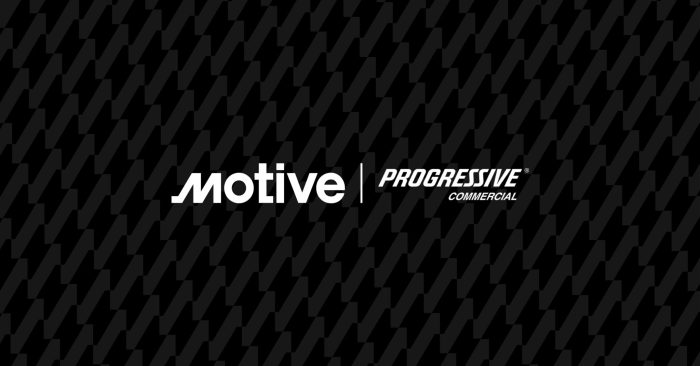Insurance premiums can feel like a significant drain on your finances. However, understanding the factors that influence these costs empowers you to take control and potentially save a substantial amount of money each year. This guide explores various strategies to decrease your insurance premiums across different types of coverage, from auto and home to health insurance, offering practical tips and actionable advice to help you lower your expenses.
By examining your driving habits, home security, health lifestyle, and shopping around for the best deals, you can significantly reduce your insurance burden. We’ll delve into the specifics of each insurance type, highlighting key cost drivers and offering clear, concise solutions to help you achieve substantial savings. This isn’t about cutting corners; it’s about making informed choices to optimize your coverage and minimize your premium costs.
Understanding Your Insurance Premiums

Understanding the factors that determine your insurance premiums is crucial for managing your finances effectively. Your premiums aren’t arbitrarily set; they’re calculated based on a complex interplay of factors specific to you, your policy, and the type of insurance. By understanding these factors, you can make informed decisions to potentially lower your costs.
Insurance premiums are essentially the price you pay for the coverage you receive. The cost is determined by assessing the level of risk the insurer takes in covering you. Higher risk translates to higher premiums, while lower risk leads to lower premiums. This risk assessment varies significantly across different insurance types.
Factors Influencing Insurance Costs
Several key factors influence the overall cost of your insurance premiums. These factors are carefully weighed by insurance companies to determine the likelihood of a claim and the potential cost of that claim. Understanding these factors allows you to identify areas where you might be able to improve your risk profile and potentially reduce your premiums.
- Your Demographics: Age, gender, and location significantly impact premiums. Younger drivers, for example, generally pay more for car insurance due to higher accident rates. Similarly, those living in high-crime areas might pay more for home insurance.
- Your Risk Profile: This encompasses factors like your driving record (for auto insurance), credit score (for many types of insurance), and claims history. A history of accidents or claims will almost certainly increase your premiums.
- The Coverage You Choose: Higher coverage limits naturally lead to higher premiums. Choosing a higher deductible can lower your premiums, but you’ll pay more out-of-pocket if you need to file a claim.
- The Type of Vehicle or Property: For auto insurance, the make, model, and year of your car influence premiums. More expensive or high-performance vehicles tend to have higher premiums. For home insurance, the size, age, and location of your home play a role.
- Market Conditions: The overall insurance market and the financial performance of the insurance company can also impact premiums. Factors like inflation and interest rates can influence pricing.
Varying Cost Drivers Across Insurance Types
The specific factors that heavily influence premiums differ depending on the type of insurance.
- Auto Insurance: Driving record, vehicle type, location, and age are major factors. A clean driving record and an older, less expensive car will generally result in lower premiums.
- Home Insurance: Location, home value, age of the home, security features (alarms, security systems), and building materials all influence premiums. Homes in safer neighborhoods with updated security systems tend to have lower premiums.
- Health Insurance: Age, health status (pre-existing conditions), location, and the type of plan chosen are key factors. Generally, older individuals and those with pre-existing conditions will pay more.
Common Insurance Premium Components
Your premium is typically broken down into several components. Understanding these components can help you identify areas for potential savings.
- Base Rate: This is the starting point for your premium, determined by factors like your age, location, and the type of coverage you choose.
- Risk-Based Adjustments: These adjustments reflect your individual risk profile, such as your driving record or credit score.
- Coverage Limits: Higher coverage limits (e.g., higher liability limits on auto insurance) result in higher premiums.
- Deductible: A higher deductible (the amount you pay out-of-pocket before insurance coverage begins) generally leads to lower premiums.
Example: Impact of a Single Factor Change
Let’s say John’s annual auto insurance premium is $1200. If he improves his driving record by avoiding accidents for a year, his insurer might reduce his risk-based adjustment, lowering his premium by 10% to $1080. This illustrates how a positive change in one factor can directly impact the overall premium.
Improving Your Driving Record (for Auto Insurance)
Your driving record significantly impacts your auto insurance premiums. Insurance companies assess risk based on your history, and a clean record translates to lower costs. Conversely, traffic violations and accidents lead to higher premiums, reflecting the increased risk you pose to the insurer. Understanding this relationship is key to managing your insurance expenses effectively.
Impact of Traffic Violations and Accidents
Traffic violations and accidents directly influence your insurance premiums. Each incident is assigned points, which accumulate on your driving record. More points mean a higher risk profile, resulting in increased premiums. The severity of the violation or accident also plays a crucial role; a DUI, for instance, carries a far greater impact than a minor speeding ticket. Furthermore, multiple incidents within a short period can drastically increase your rates, sometimes even leading to policy cancellation. Insurance companies use sophisticated algorithms to calculate risk, factoring in the type, frequency, and severity of incidents. For example, a single at-fault accident might increase premiums by 20-40%, while multiple speeding tickets within a year could lead to even higher increases.
Defensive Driving Strategies
Defensive driving is a proactive approach to minimizing risk on the road. It involves anticipating potential hazards and taking steps to avoid accidents. Key strategies include maintaining a safe following distance, adhering to speed limits, avoiding distractions like cell phones, and being aware of your surroundings. Regular vehicle maintenance, ensuring proper functioning of brakes, lights, and tires, also contributes to safer driving and reduces the likelihood of accidents. Practicing these habits not only reduces your risk of accidents but also demonstrates responsible driving behavior to insurance companies, potentially leading to lower premiums in the long run.
Benefits of Driver’s Safety Courses
Completing a driver’s safety course can significantly benefit your insurance premiums. Many insurance companies offer discounts to drivers who complete approved courses. These courses typically cover defensive driving techniques, traffic laws, and accident avoidance strategies. Beyond the potential for discounts, the knowledge gained enhances your driving skills and promotes safer driving habits, indirectly reducing your risk of accidents and violations. The completion certificate serves as proof of your commitment to safe driving, providing tangible evidence for insurers to consider when assessing your risk. The discount amount varies depending on the insurer and the specific course, but it can represent a substantial saving over time.
Insurance Rate Comparison Based on Driving Record
| Driver Record | Violation Type | Points | Premium Increase Percentage |
|---|---|---|---|
| Clean Record | None | 0 | 0% |
| Minor Speeding Ticket | Speeding (under 15 mph over limit) | 1-2 | 5-10% |
| At-Fault Accident | Collision | 3-5 | 20-40% |
| DUI | Driving Under the Influence | 6-8+ | 50%+ |
Health Lifestyle Choices (for Health Insurance)

Your health insurance premiums are significantly influenced by your lifestyle choices. Maintaining a healthy lifestyle can lead to lower premiums, reflecting the lower risk you pose to the insurance company. Conversely, unhealthy habits can result in higher premiums due to increased likelihood of health issues requiring costly treatments.
Impact of Healthy Habits on Premiums
Adopting a healthy lifestyle can demonstrably reduce your health insurance costs. Insurance companies often offer discounts or lower premiums to individuals who actively participate in wellness programs or demonstrate a commitment to preventative care. This is because healthier individuals tend to require fewer medical services, leading to lower overall healthcare expenses for the insurer. For example, a non-smoker with a healthy BMI might qualify for a lower premium compared to a smoker with a high BMI. The financial incentives are a strong motivator to prioritize your health.
Lifestyle Changes for Improved Health and Cost Reduction
Several lifestyle changes can contribute to better health and lower insurance premiums. These changes are often interconnected, meaning that improvements in one area can positively impact others.
- Regular Exercise: Aim for at least 150 minutes of moderate-intensity aerobic activity or 75 minutes of vigorous-intensity aerobic activity per week, along with muscle-strengthening activities twice a week. Regular exercise reduces the risk of chronic diseases like heart disease, stroke, and type 2 diabetes, all of which can significantly increase healthcare costs.
- Balanced Diet: Focus on a diet rich in fruits, vegetables, whole grains, and lean proteins. Limit processed foods, sugary drinks, and unhealthy fats. A balanced diet supports a healthy weight, reduces the risk of chronic diseases, and contributes to overall well-being, thus lowering healthcare utilization.
- Stress Management: Chronic stress can negatively impact both physical and mental health. Techniques like yoga, meditation, or spending time in nature can help manage stress levels and prevent stress-related illnesses. Reduced stress contributes to better overall health, lowering the risk of stress-related health problems.
- Quit Smoking: Smoking significantly increases the risk of various cancers, respiratory illnesses, and heart disease. Quitting smoking is one of the most impactful changes you can make to improve your health and lower your insurance premiums. Many resources are available to help smokers quit.
- Maintain a Healthy Weight: Obesity is a major risk factor for numerous health problems. Maintaining a healthy weight through a combination of diet and exercise reduces the risk of these conditions and lowers healthcare costs.
Accessing Preventative Health Services
Preventative care is crucial for maintaining good health and preventing costly health problems down the line. Many health insurance plans cover preventative services at little to no cost to the insured.
- Primary Care Physician Visits: Regular checkups with your primary care physician are essential for monitoring your overall health and identifying potential problems early on. These visits often include screenings and vaccinations.
- Employer-Sponsored Wellness Programs: Many employers offer wellness programs that provide resources and incentives for employees to adopt healthy lifestyles. These programs often include health screenings, fitness classes, and health education resources.
- Community Health Centers: Community health centers offer affordable and accessible healthcare services to individuals and families, regardless of their ability to pay. They often provide preventative care services.
Health Screenings and Potential Cost Savings
Regular health screenings can detect potential health problems early, allowing for timely intervention and preventing more expensive treatments later.
- Blood Pressure Screening: Regular blood pressure checks can help detect and manage hypertension, reducing the risk of heart disease and stroke. Early detection can prevent costly complications.
- Cholesterol Screening: High cholesterol can increase the risk of heart disease. Regular cholesterol screenings can help identify and manage high cholesterol levels, preventing heart-related complications and associated costs.
- Diabetes Screening: Early detection of diabetes can help prevent serious complications, such as heart disease, kidney disease, and blindness. Early management can prevent costly treatments.
- Cancer Screenings (e.g., mammograms, colonoscopies): Early detection of cancer through screenings significantly improves treatment outcomes and survival rates, saving potentially enormous healthcare expenses associated with advanced-stage cancers.
Bundling Insurance Policies
Bundling your insurance policies, essentially combining multiple types of coverage under one provider, is a common strategy to potentially reduce your overall premiums. This approach leverages the economies of scale enjoyed by insurance companies, often resulting in significant discounts for consumers. However, it’s crucial to weigh the advantages and disadvantages before making a decision.
Bundling offers several potential benefits, primarily financial savings. Insurance companies often incentivize customers to bundle their auto and homeowners insurance, or even expand to include other types like renters, umbrella liability, or even life insurance. These bundled packages frequently come with discounts that can be substantial, depending on the insurer and the specific policies combined. The convenience of managing all policies through a single provider is another key advantage, simplifying billing and communication.
Potential Savings from Bundling Auto and Home Insurance
Many insurance companies offer discounts of 10% to 25% or more for bundling auto and homeowners insurance. For example, a hypothetical customer paying $1,200 annually for auto insurance and $800 annually for homeowners insurance might see a 15% discount on the combined premium, resulting in annual savings of $300. The exact discount varies greatly based on factors such as location, coverage levels, claims history, and the specific insurer. This substantial savings makes bundling a financially attractive option for many.
Advantages and Disadvantages of Bundling Various Insurance Types
The advantages of bundling extend beyond financial savings. Simplified administration, with a single point of contact for all claims and policy inquiries, reduces administrative hassle. Furthermore, some insurers offer additional perks to bundled policyholders, such as priority service or access to exclusive programs. However, disadvantages also exist. Bundling may limit your options if you find better rates for a specific type of insurance from a different provider. Moreover, a single incident impacting multiple bundled policies could potentially lead to a more significant increase in premiums compared to having separate policies.
Examples of Bundled Insurance Packages and Associated Discounts
Several insurers offer various bundled packages. For instance, a hypothetical “Family Protection Package” might include auto insurance, homeowners insurance, and umbrella liability insurance, with a total discount of 20% applied. Another insurer might offer a “Multi-Policy Discount” applying a 10% discount to each additional policy bundled with an existing auto insurance policy. Specific discounts and bundled packages vary greatly, so it’s crucial to compare quotes from multiple insurers to determine the most cost-effective option. It’s also important to read the fine print of each policy to fully understand the terms and conditions.
Exploring Discounts and Payment Options

Securing the best possible insurance rates often involves more than just maintaining a clean driving record or healthy lifestyle. A significant portion of premium savings can be unlocked by understanding and leveraging the discounts and payment options available from your insurer. This section explores various ways to reduce your premiums through smart choices in discounts and payment plans.
Many insurance companies offer a range of discounts designed to reward responsible behavior and long-term loyalty. These can significantly reduce your overall cost, sometimes resulting in substantial savings over the policy term. Understanding these options and actively pursuing them can make a tangible difference in your budget.
Available Insurance Discounts
Insurance providers frequently offer discounts based on various factors. These discounts can stack, meaning you may qualify for multiple reductions simultaneously. It’s crucial to inquire with your insurer about all potential discounts you might be eligible for.
- Good Student Discount: Many insurers offer reduced premiums for students maintaining a high GPA (typically a B average or higher). This demonstrates responsibility and a lower risk profile.
- Multi-Car Discount: Insuring multiple vehicles under the same policy often results in a discount. This reflects the reduced administrative costs for the insurer.
- Loyalty Discount: Long-term policyholders often receive discounts as a reward for their continued business. This encourages customer retention and reflects a lower risk profile over time.
- Safety Feature Discount: Vehicles equipped with anti-theft devices or advanced safety features (e.g., anti-lock brakes, airbags) may qualify for discounts. This reflects the lower likelihood of accidents or claims.
- Bundling Discount: Combining multiple insurance types (auto, home, renters) with the same provider often leads to significant savings. This is due to economies of scale and streamlined administration.
Annual vs. Monthly Premium Payments
Choosing between annual and monthly payment plans significantly impacts your overall premium cost. While monthly payments offer convenience, they typically come with a higher overall cost due to added administrative fees charged by the insurer. Paying annually often results in a lower total premium, as you avoid these incremental charges.
Paying your insurance premium annually can often save you money compared to monthly installments.
Payment Plans and Their Impact on Premiums
While paying annually is generally the most cost-effective option, some insurers offer payment plans that break down the annual premium into smaller, more manageable installments. These plans usually involve a small administrative fee, but they can be beneficial for those who prefer a more flexible payment schedule. The added cost of these plans should be weighed against the convenience they offer. It’s important to compare the total cost under different payment options to make an informed decision.
Closing Summary
Lowering your insurance premiums requires a proactive approach, combining careful planning and informed decision-making. By implementing the strategies Artikeld in this guide – from improving your driving record and enhancing home security to making healthy lifestyle choices and strategically shopping for insurance – you can significantly reduce your annual costs. Remember, understanding your insurance policy and exploring available discounts are crucial steps in achieving long-term savings. Take control of your insurance expenses and enjoy the financial benefits of a well-managed insurance strategy.
Quick FAQs
Can I lower my car insurance premium without changing my car?
Yes, you can. Improving your driving record, completing a defensive driving course, and bundling your insurance policies are all ways to lower your premium without changing your vehicle.
What if I have a pre-existing health condition? Can I still lower my health insurance premium?
While pre-existing conditions might not allow you to drastically lower your premium, maintaining a healthy lifestyle and actively managing your condition can sometimes lead to smaller cost reductions or eligibility for certain wellness programs.
How often should I compare insurance quotes?
It’s advisable to compare quotes annually, or even more frequently if you experience significant life changes (e.g., marriage, new home, new car).
Does paying my insurance annually always save money?
Often, yes, but check with your provider. Some offer discounts for annual payments, while others may not offer a significant difference.